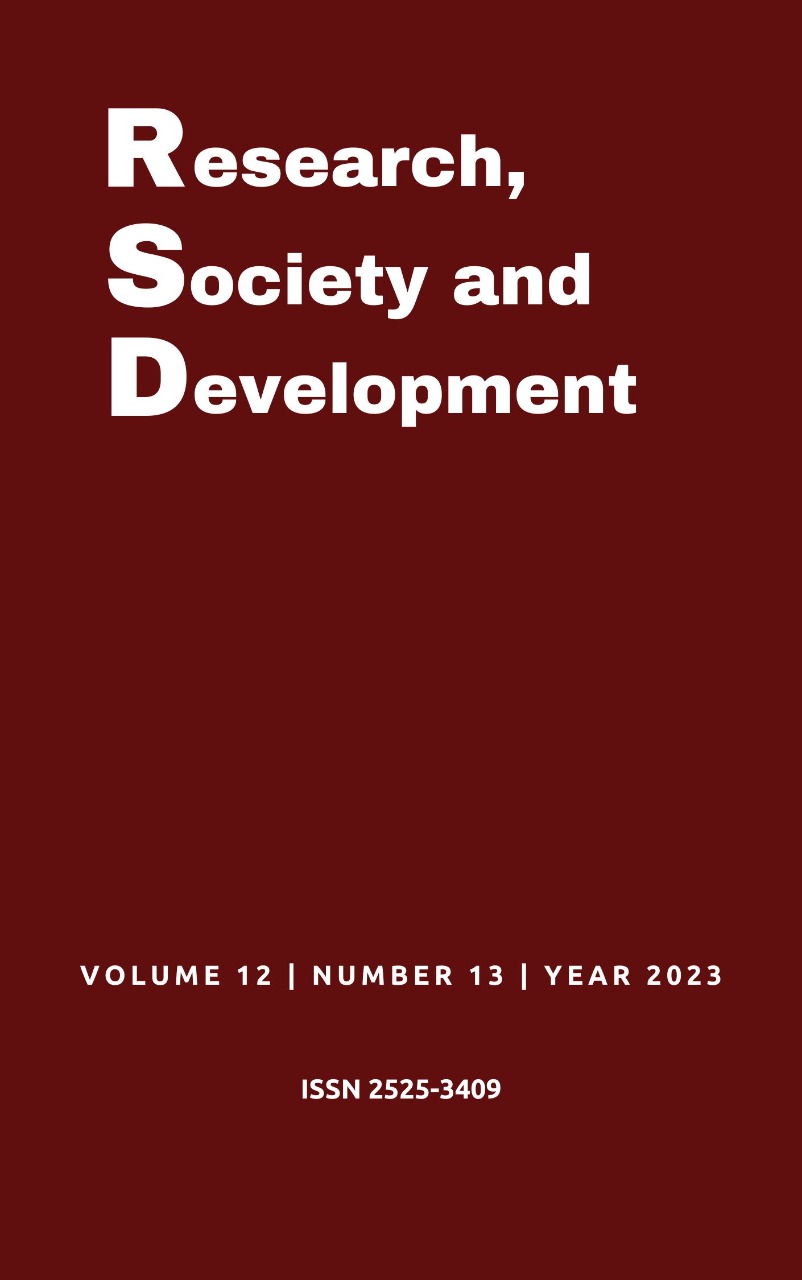Effects of physical exercise to improve the body and behavioral composition of children with autism spectrum disorder
DOI:
https://doi.org/10.33448/rsd-v12i13.44161Keywords:
Autism spectrum disorder; Public policy; Body composition; Exercise.Abstract
There are increasing cases of children with ASD in the world, we can say that today we already have millions of individuals with this disorder. Physical education offers children with ASD ways to express themselves and consequently benefits for psychomotor, social and cardiovascular health. This research aimed to address the topic of Autism Spectrum Disorder (ASD), highlighting its symptoms, the importance of early diagnosis and the growing incidence. It also emphasizes the need for public policies for prevention and treatment. The study proposes a narrative review on the effects of exercise on children with ASD, addressing the methodology used in the research, which included the search and analysis of 84 articles, resulting in 6 relevant to the topic. The results show that well-guided physical exercise proved to be a valuable tool for improving the quality of life of children with ASD, promoting improvements in body composition, behavior and social interaction.
References
American Psychiatric Association. (2022) DSM-5-TR. (5ª edição). Porto Alegre: Artmed.
Carneiro, G.S., Pacheco, N.I., Silva, J.D.S., Moraes, L.A., Gonçalves, E.M.R., Lopes, D.C., Silva, A.P., Lira, A.R.R.S., Pessoa, D.R., Soares, L.F.F., Camarço, G.R.N., Coutinho, I.V.L., Vasconcelos, I.C.C., Oliveira, B.E.R., Deus, L.R.S., & Mendes, L.A.P.P.F. (2022). A influência de exercícios na infância e ganhos na saúde para o futuro. Reseach, Society and Development 11 (3) http://dx.doi.org/10.33448/rsd-v11i3.26504
Chen, S., & Zhao, M. (2018). The Effects of Structured Physical Activity Program on Social Interaction and Communication for Children with Autism. Hindawi. 1-13 https://doi.org/10.1155/2018/1825046
Fuentes, D; Malloy-diniz, L. F; Camargo, C. H. P; Cosenza, R. (2014) M. Neuropsicologia Teoria e Prática. (2ª edição). Porto alegre: Artmed.
Haghighi, A.H., Broughani, S., Askari, R., Shahrabadi, H., Souza, D., & Gentil, P. (2022). Combined Physical Training Strategies Improve Physical Fitness, Behavior, and Social Skills of Autistic Children. Journal of Autism and Developmental Disorders. https://doi.org/10.1007/s10803-022-05731-8
Jia, W., & Xie, J. (2021). Improvement of the health of people with autism spectrum disorder by exercise. Revista Bras Med Esporte 27 (3) 282-285 http://dx.doi.org/10.1590/1517-8692202127032021_0081
Konkiewitz, E.C; Ziff, E.B. (2018) Espectro do Autismo, Criatividade e Emoções (talentos e oportunidades criativas). (1ª edição) Pulso.
Lopes, B.M.M., & Cabral, F.D. (2021). O papel do profissional de educação física na vida do autista. Revista Ibero- Americana de Humanidades, Ciências e Educação- REASE 7 (10) 2675-3375 doi.org/ 10.51891/rease.v7i10.3022
Macedo, C. S. G., Garavello, J. J., Oku, E.C., Miyagusuku, F.H.,Agnoll, P.D., & Nocetti, P. M. (2003). Benefícios do Exercício Físico para a Qualidade de Vida. Revista brasileira de atividade física 8 (2), 19-27.
Mattos, P. C. (2015). Tipos de revisão de literatura. Unesp, 1-9 https://www.fca.unesp.br/Home/Biblioteca/tipos-de-evisao-de-literatura.pdf
Ministério da Saúde (2020) Exercício físico x Atividade física: você sabe a diferença? https://www.gov.br.
Muotri, Alysson R. (2023). Mundo Autista. https://omundoautista.uai.com.br.
Oliveira, F., & Tosim, A. (2018). Metodologias do exercício físico para pessoas com transtornos do espectro autista: uma revisão literária. Revista cientifica da FHO UNIARARAS. 6 (2) 34-49
Pinto, R.N.M., Torquato, I.M.B., Collet, N., Reichert, A.P.S., Neto, V.L.S & Saraiva, A.M. (2016). Autismo infantil: impacto do diagnóstico e repercussões nas relações familiares. Revista Gaúcha de Enfermagem 37 (3) 1-9 http://dx.doi.org/10.1590/1983-1447.2016.03.61572
Rossato, L.A; Lépore, P.E; Cunha, R.S. (1990). Estatuto da Criança e do Adolescente. (11ª edição) Saraiva Jur,
Rother, E.T. (2007). Revisão sistemática x revisão narrativa. Acta Paul Enferm. 20 (2) https://doi.org/10.1590/S0103-21002007000200001
Sowa, M., & Meulenbroek, R. (2011). Effects of physical exercise on autismo spectrum disorders: a meta-analysis. Research in autismo spectrum disordes 6 (1) 46-57 https://doi.org/10.1016/j.rasd.2011.09.001
Sorensen, C., & Zarrett, N. (2014). Benefits of Physical Activity for Adolescents with Autism Spectrum Disorders: A Comprehensive Review. Review journal of autismo and developmental disorders. 1 344-353
Toscano, C.V.A., Carvalho, H.M., & Ferreira, J.P. (2017). Exercise Effects for children with Autism Spectrum Disorder: Metabolic Health, Autistic Traits, and Quality of Life. Perceptual and Motor Skills 0 (0) 1-21. DOI: 10.1177/0031512517743823
Toscano, C.V.A., Ferreira, J.P., Quinaud, R.T., Silva, K.M.N., Carvalho, H.M., & Gaspar, J.M. (2022). Exercise improves the social and behavioral skills of children and adolescent with autism spectrum disorders. Frotierns in psychiatry 1-11 DOI 10.3389/fpsyt.2022.1027799
Ye, Q., Hu, G., Cai, Y., Zhang, G., Xu, K., Qu, T., & Gao, R. (2019). Strutural exercise-based intervention for health problems in individuals with autismo spectrum disorders: a pilot study. European Review for Medical and Pharmacological Sciences. 23 4313-4320
Downloads
Published
How to Cite
Issue
Section
License
Copyright (c) 2023 Gabriela Artriclino da Silva; Vanessa Santos Tavares ; Aluísio Avelino Pinto

This work is licensed under a Creative Commons Attribution 4.0 International License.
Authors who publish with this journal agree to the following terms:
1) Authors retain copyright and grant the journal right of first publication with the work simultaneously licensed under a Creative Commons Attribution License that allows others to share the work with an acknowledgement of the work's authorship and initial publication in this journal.
2) Authors are able to enter into separate, additional contractual arrangements for the non-exclusive distribution of the journal's published version of the work (e.g., post it to an institutional repository or publish it in a book), with an acknowledgement of its initial publication in this journal.
3) Authors are permitted and encouraged to post their work online (e.g., in institutional repositories or on their website) prior to and during the submission process, as it can lead to productive exchanges, as well as earlier and greater citation of published work.

